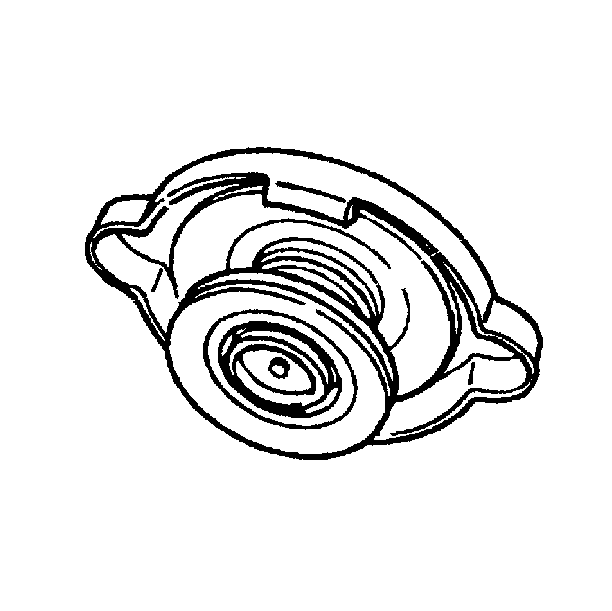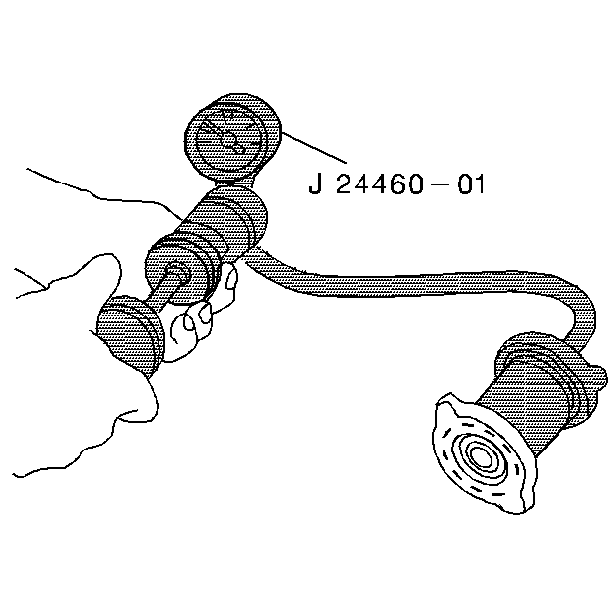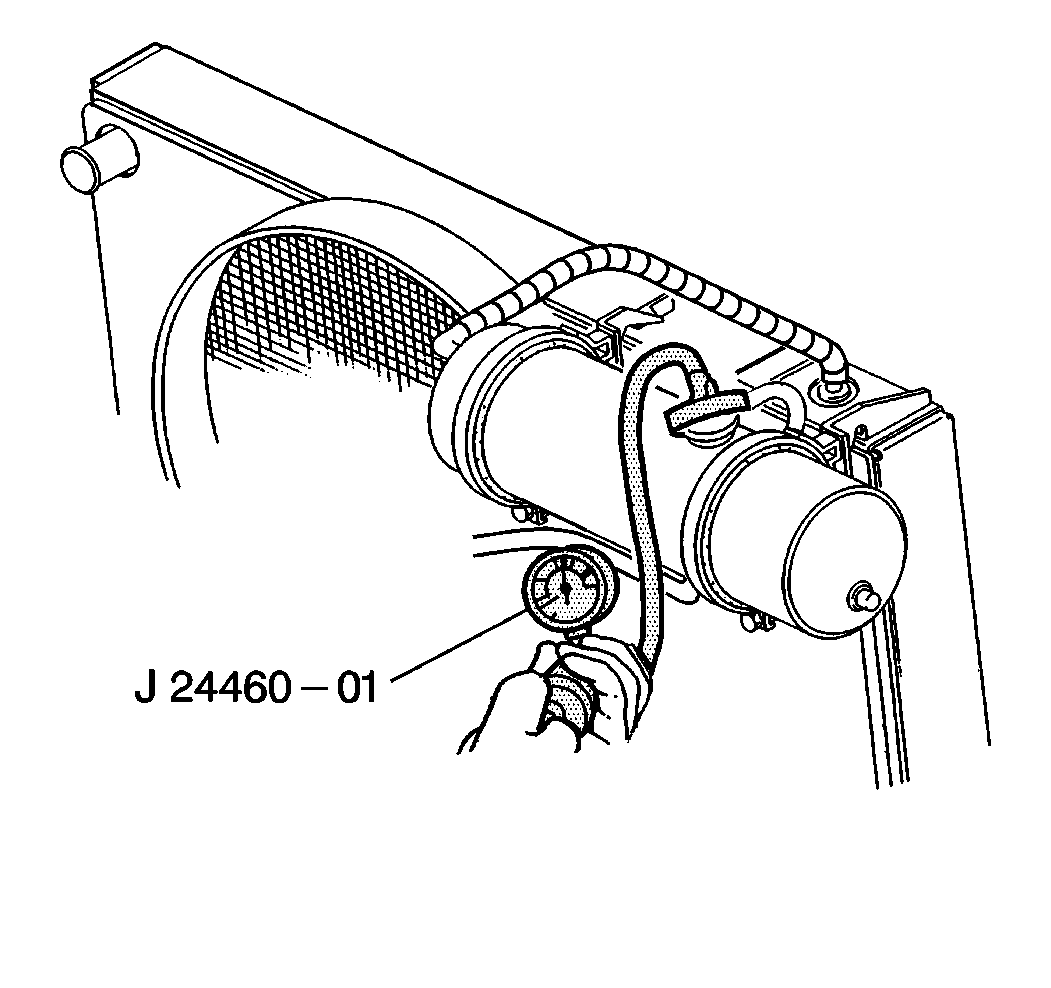Radiator Cap
Caution: To avoid being burned, do not remove the radiator cap while the engine is at normal operating temperature. The cooling system will relieve scalding fluid and steam under pressure if the cap is removed while the engine and radiator are still hot, causing serious injury.
Tools Required
J 24460-01 Cooling System Tester
- Remove the radiator cap.
- Use coolant in order to wet the radiator cap gasket. Wash off any sediment from the sealing surface of the cap.
- Install the J 24460-01 to the radiator cap.
- Use the plunger handle on the J 24460-01 in order to increase the pressure to the value that is stamped on the cap.
- Note the rate of decrease in pressure.
- Replace the radiator cap if the cap does not hold the pressure for 10 seconds.


The pressure reading should remain within the corresponding pressure segment of the scale for about 10 seconds.
Cooling System
Tools Required
J 24460-01 Cooling System Tester
- Tighten the following components:
- Inspect the connections for leaks at the following locations:
- Remove the radiator cap.
- Fill the cooling system to the level of the radiator filler neck.
- Attach the J 24460-01 to the filler neck. Refer to the instructions that are supplied with the supplied with the J 24460-01 .
- Increase the pressure.
- If a measurable amount of pressure drops in less than 2 minutes, check for a leak.
- Locate the leak.
- Repair or replace the filler neck as necessary.
| • | The radiator hose clamps |
| • | The heater hose clamps |
| • | The surge tank |
| • | The coolant recovery reservoir |
| • | The air compressor coolant lines |

Do not increase the pressure above 138 kPa (20 psi).
Ensure that the system holds the pressure for about 2 minutes.
Off-Vehicle Leak Testing
Notice: Do not use boil-out tanks or vats or other tanks that have been used for copper or brass radiators. The flux, acid, and caustic cleaners remaining in these tanks and will attack the aluminum and cause radiator failure. Use a separate test tank containing clean water for servicing aluminum/plastic radiators.
- Install the test fittings or the rubber test caps to the inlet and outlet necks.
- Seal the oil cooler fittings with metal plugs.
- Attach the pressure tester.
- Gradually apply air pressure in order to attain an air pressure of 138 kPa (20 psi).
- Read the gauge in order to determine if a pressure loss has occurred.
- Use the following steps in order to inspect the radiator for leaks:
- If leaks exist, repair or replace the radiator as necessary.
This action will have the following effects:
| • | The plugs will protect the coolant. |
| • | The plugs will prevent the fluid from running out of the system. |
Do not exceed a pressure of 138 kPa (20 psi).
| 6.1. | Run water or a mild detergent solution over the radiator. |
| 6.2. | Look for bubbles in the water or the solution. |
